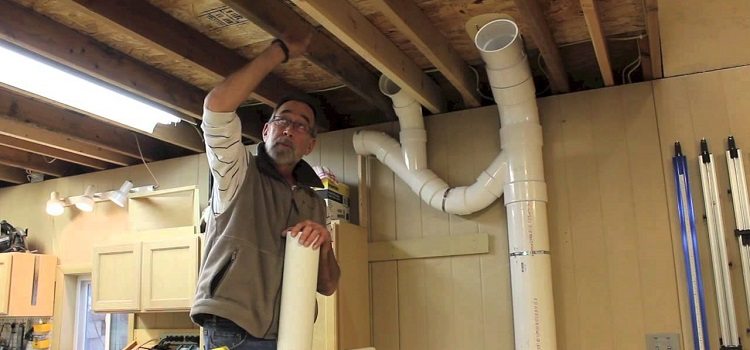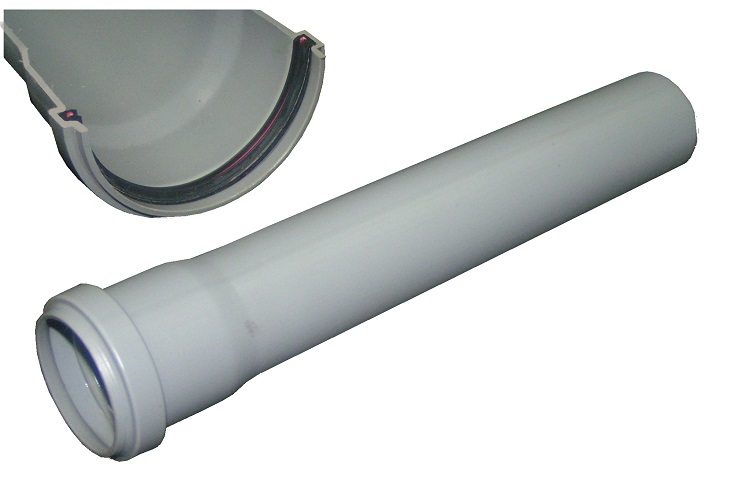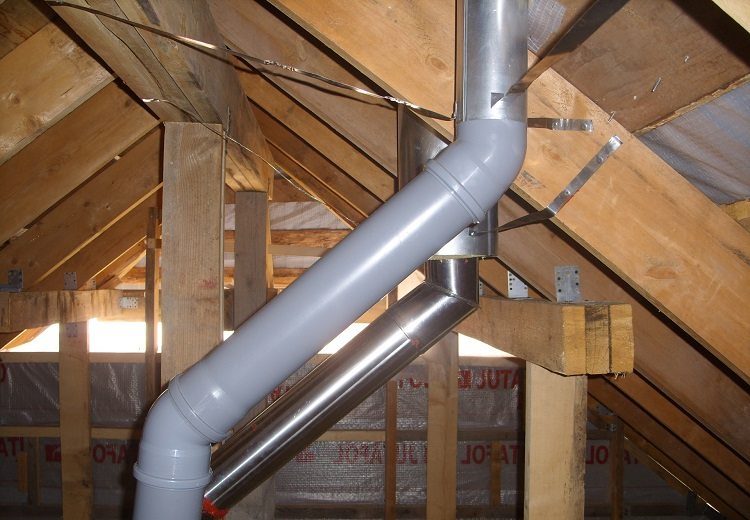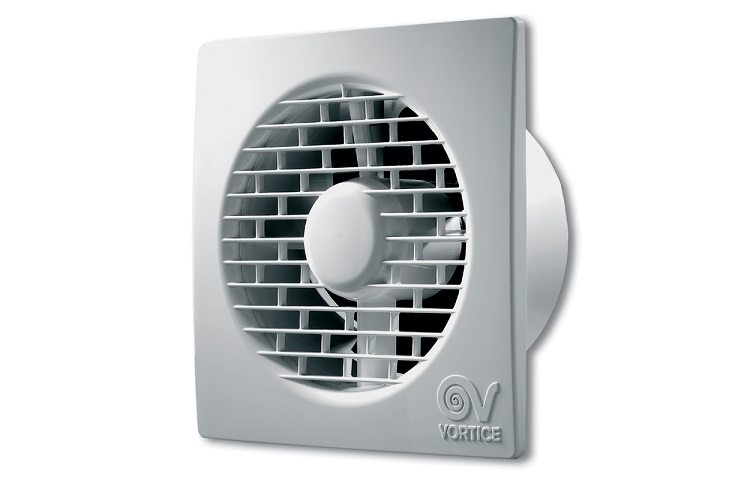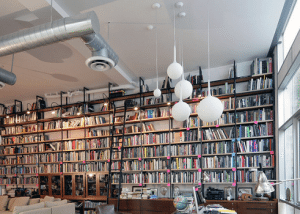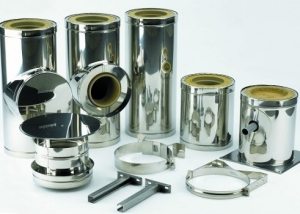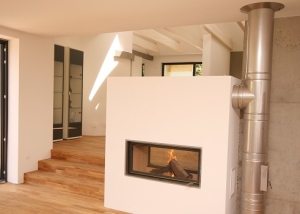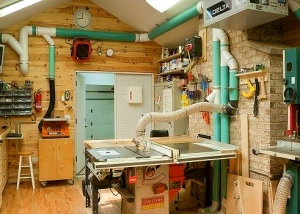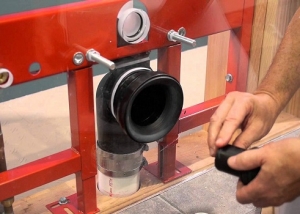The ventilation system of the room provides an air flow without fungi, mold, dust, removes harmful and unpleasant gases, fumes, prevents premature destruction of the building structure. Properly designed and installed, it must meet the requirements and sanitary standards for ventilation. Is it possible to use a sewer pipe to achieve effective air circulation in the house - there is no consensus among specialists.
Content
Possibility of using sewer pipes for ventilation
The industrial production of plastic pipes is based on the use of materials: polyethylene, polypropylene, polyvinyl chloride (PVC), polyurethane. All of them are distinguished by environmental safety, tightness, and durability. A variety of shaped products and shapes allows you to route ventilation networks of any complexity and configuration.
As a rule, in a private house, PVC pipes of round or rectangular cross section are used for air exhaust. They have thin walls, which provides lightness. Ease of installation is possible due to the presence of sockets with rubber seals.
It is believed that you can not use fan pipes in the ventilation system, because the plastic contains toxic substances. At the same time, manufacturers of such products declare environmental safety and product quality.
Another point talking about the inadmissibility of installing ventilation from sewer pipes in a private house is the appearance of a static charge on the inner surface of the pipe when air moves. As a result, dust and dirt adhere. In the manufacture of plastic ducts, the products are treated with an antistatic agent. If you carry out a similar procedure with respect to sewer pipes, then there will be no electrification.
The main features of natural ventilation
The main way the air flows into the room is through the windows. Window systems are equipped with window leaves and micro-ventilation. Natural ventilation is carried out due to the difference in air pressure outside and inside the room caused by different temperatures. To reduce condensation in the pipes on the roof, the ventilation shaft must be insulated. Installing an exhaust fan will help improve natural ventilation. It is placed in the duct, window or in the bearing wall.
In the kitchen, bathroom, toilet should be equipped with a hood - a vertical channel of sufficient height. Contaminated and moistened air enters it. At the outlet of the channel, nozzles are installed that prevent atmospheric precipitation and wind blowing. If the room does not have access to the ventilation duct, it is necessary to provide a gap of about 10 mm between the floor and the door. You can put a decorative grille instead of a slit.
In a private house, brickwork is usually built for the hood. However, in frame, wooden or reconstructed houses, it is better to extract from sewer pipes. They are cheaper, stronger than ventilation, they are easy to process, fasten and mount. A smooth inner surface provides better traction than in a brick channel.
Besides, plastic ventilation duct compact and can be placed in a limited space.
Important! The higher the exhaust duct, the more efficient the draft.
Use of forced ventilation in the home
Ensure adequate ventilation in the house, regardless of weather conditions, can be forced ventilation. It can be centralized and local. A fully functional system of forced air inflow and outflow in a house is a network of air channels that converges to a ventilation unit. The latter can be assembled with your own hands from separate devices: exhaust and supply fan, air heater, recuperator, automation. All incoming air must be filtered.
The assembly of such a system is very expensive, so centralized ventilation is often limited to exhaust equipment. The network of pipelines from the premises is reduced to one fan, which throws air into the street, while its inflow is carried out naturally. Such a system is ineffective and unacceptable in a private house.
The local ventilation unit is designed for air exchange in one room. It can be installed with your own hands in addition to natural ventilation.
The advantages of forced ventilation in the house are: the ability to provide intensive ventilation by changing the speed of the fan, achieving the required air temperature before it enters the room. The disadvantages include the possible breakdown of mechanical elements, the need to connect a power source, channels and ventilation supply and exhaust units take up a lot of space.
The regulatory framework of ventilation and pipes for it
Normative documents regulate the parameters of natural air exchange. So, with a living space of 20 m², the air exchange should be 3 m³ of air per 1 m2 per hour. If the room area is larger, then 30 m³ of air per person is needed per hour. In bathrooms and kitchens, the air exchange in the presence of an electric stove should be at least 110 m³ / h and 140 m³ / h - with gas. For forced ventilation, the parameters are higher.
The standards define the diameters of plastic ducts, products for ventilation systems, fasteners and fittings. They are 200, 150, 125 and 100 millimeters. In some cases, equipment of other sizes can be used for installation. The most common diameters of fittings and sewer PVC pipes used for ventilation systems are 200, 160 and 110 millimeters.
Important! There is a mismatch in size when docking ventilation equipment with fan pipes. There are no adapters for such purposes.
Natural ventilation from sewer pipes is possible. However, if it is forced, it is difficult to completely replace plastic ducts with sewer pipes.
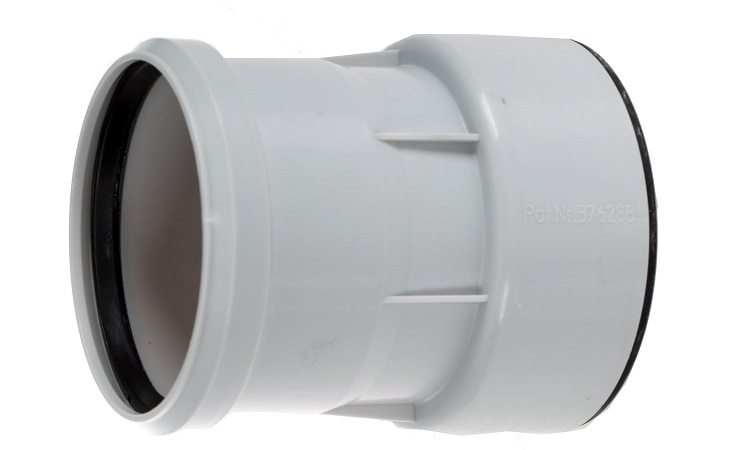
In order for ventilation to comply with the standards, pipes and fittings of a certain diameter must be used.
Advantages and disadvantages of pipes
The decision to use sewer pipes for ventilation should be made taking into account their advantages and disadvantages. Advantages:
- The lack of corrosion and the safety of its performance for a long time.
- The ability to mount air exchange networks of any configuration and complexity.
- The smooth inner surface of the plastic pipes does not obstruct the air. Therefore, there is no need to carry out periodic cleaning and equipment with less power can be used.
- Easy to install thanks to low weight and technology connections - no need to use fasteners, screws.
- By technical characteristics, plastic pipes are superior to metal counterparts. With their hidden laying, the strength indicator is not significant.
- The price of sewer pipes is 2-4 times lower than plastic ducts.
The disadvantages of plastic products for ventilation, such as that of sewer pipes:
- increased fragility;
- low melting point.
Plastic pipes for ventilation should not be used in rooms where it is possible to raise the temperature to high values. For example, PVC pipes deform and lose their rigidity at 80 ° C.
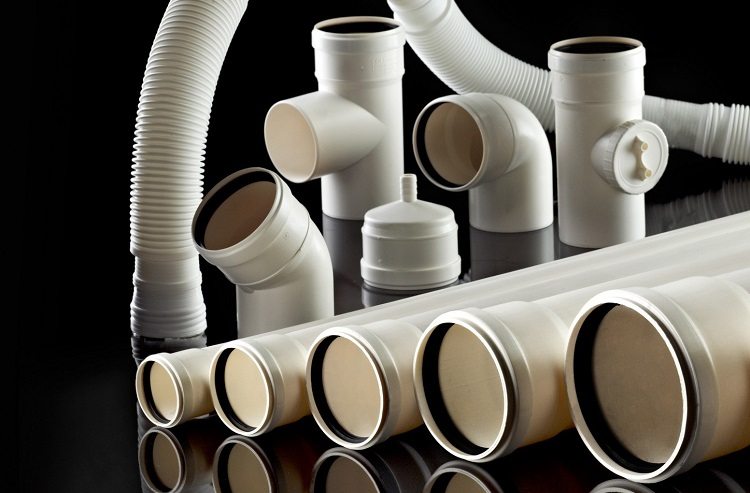
A variety of types of pipes and fittings for them allows you to assemble a ventilation duct of any complexity
Rules for arranging ventilation from sewer pipes
Do-it-yourself installation of ventilation from sewer pipes is quite simple. In an apartment building, exhaust ventilation is often located in the same mine as the sewer. In a private house, this is undesirable. Under some conditions, back draft may occur that will bring unpleasant odors to the room.
The pipe to the roof is discharged to a height of at least 1 m. When combining several ventilation systems in a private house into one, it is necessary to use pipes of the same diameter. Do-it-yourself sewerage ventilation equipment should be partitioned with a chimney.
Important! Since combustible gases can occur in sewage networks, for the purpose of fire safety, the outlet of the fan pipe must be on the opposite side of the roof or at a distance of more than 2 m from the chimneys.
Sewer pipes are not the only alternative to plastic ducts. The hood in the house can be connected using corrugated pipes. Such surfaces have strong air resistance and are not designed for long distances. This option can be used to ventilate the toilet and bathroom.
The disadvantages and advantages of fan products and plastic ducts are almost the same. However, fan connectors, bends, and turns are almost 2 times larger than ventilation products. Decoration of pipes will also be necessary. Therefore, the choice depends on the specific requirements: cost, appearance or compactness.
